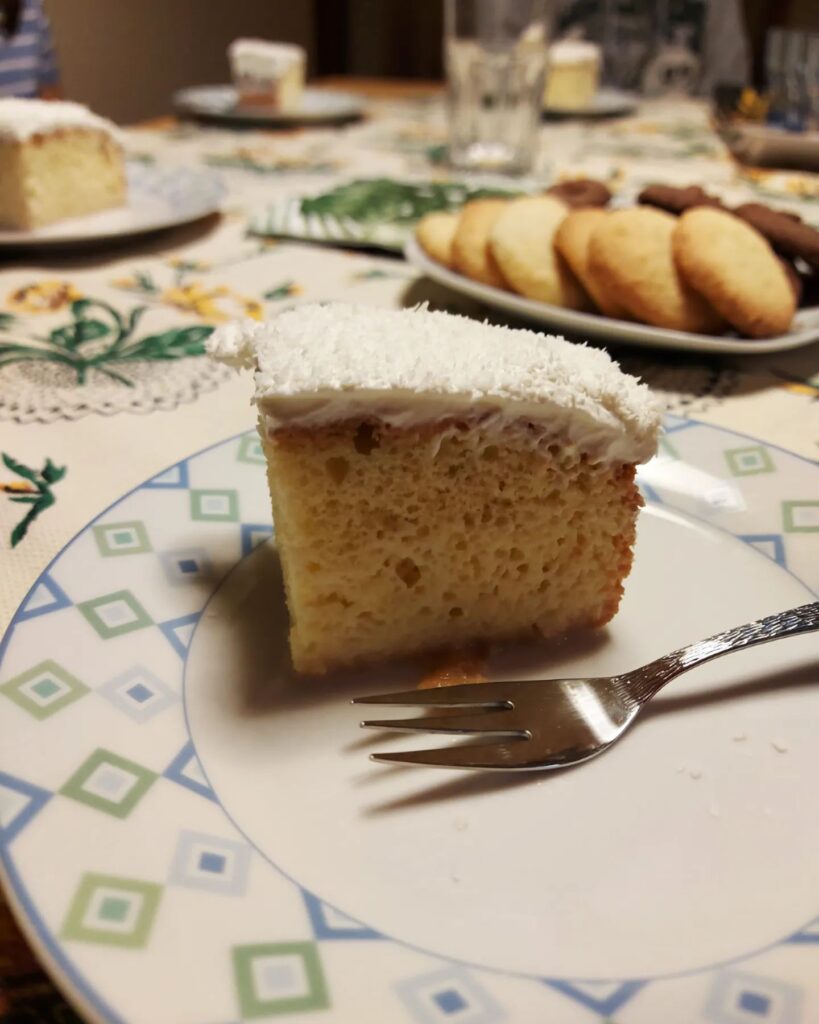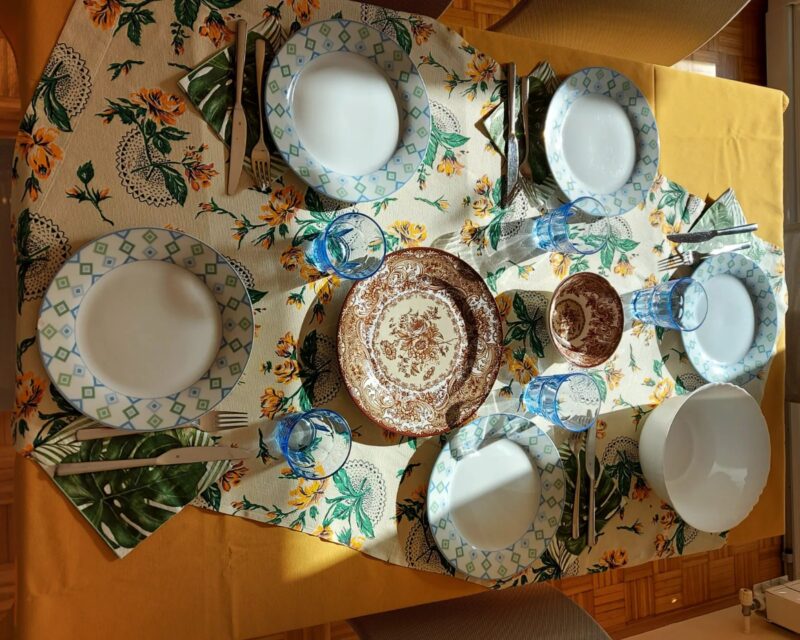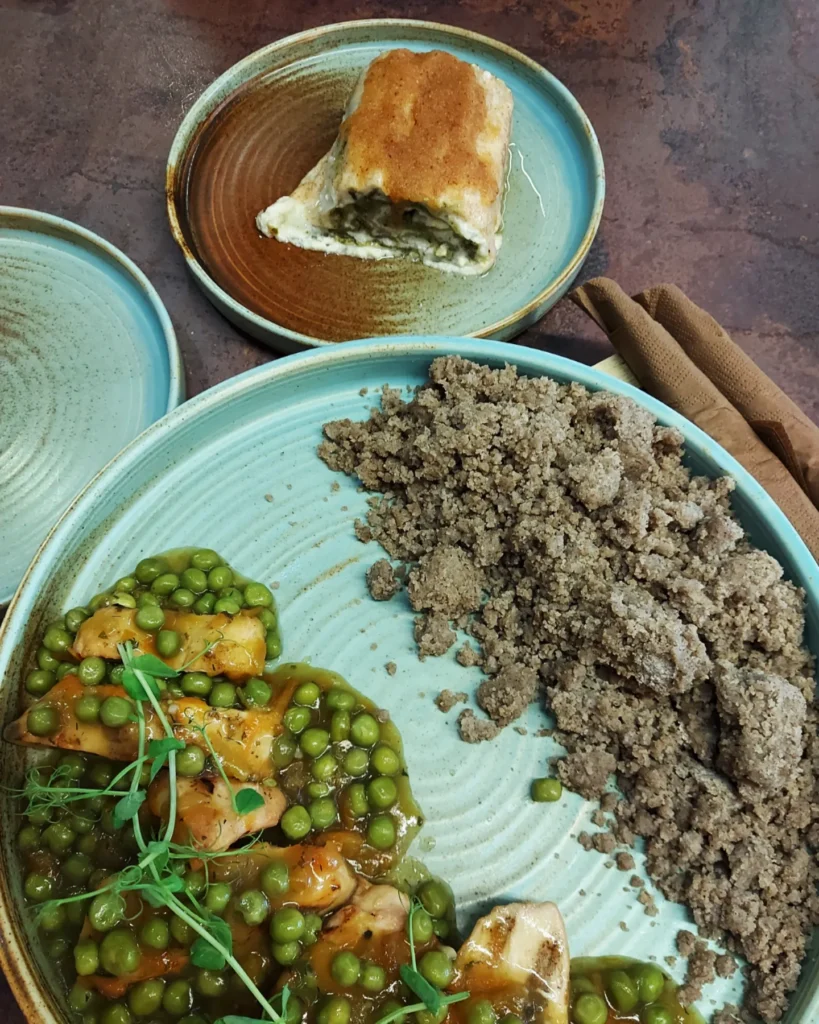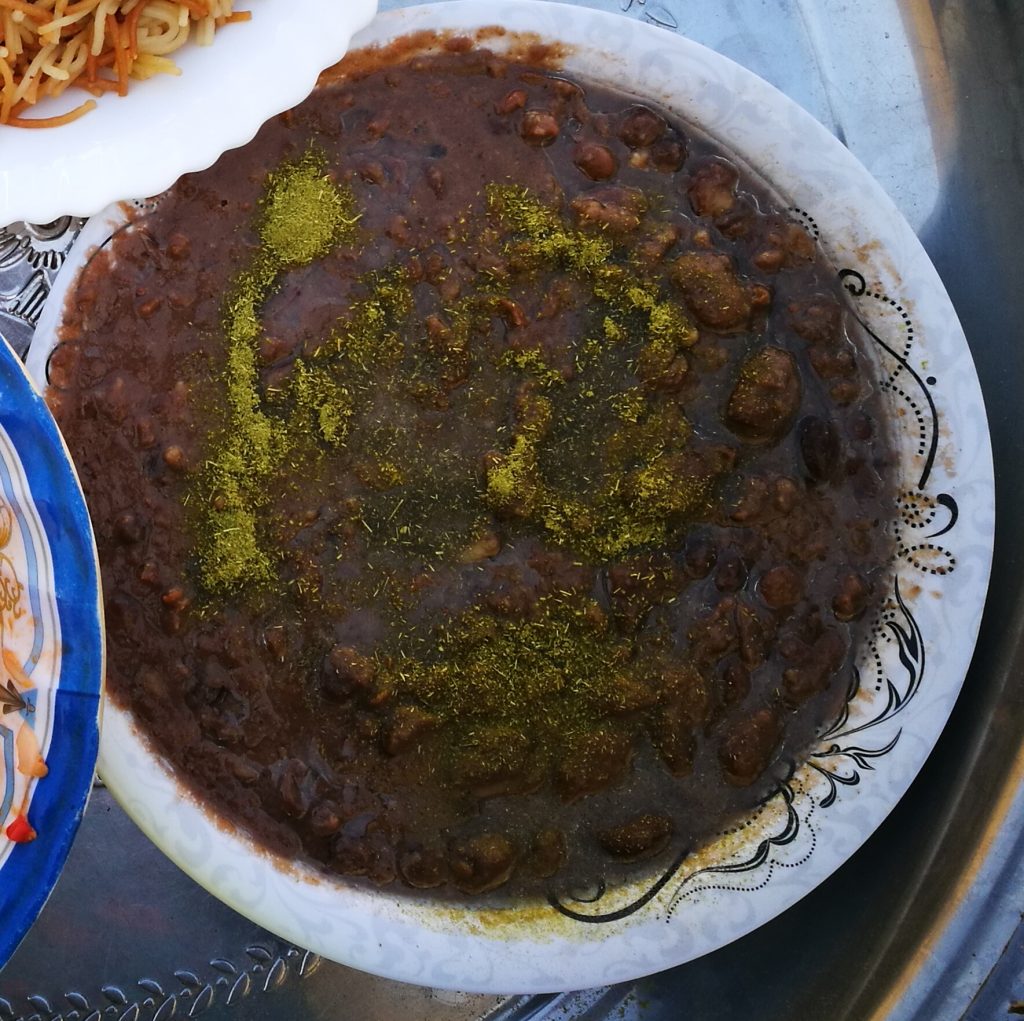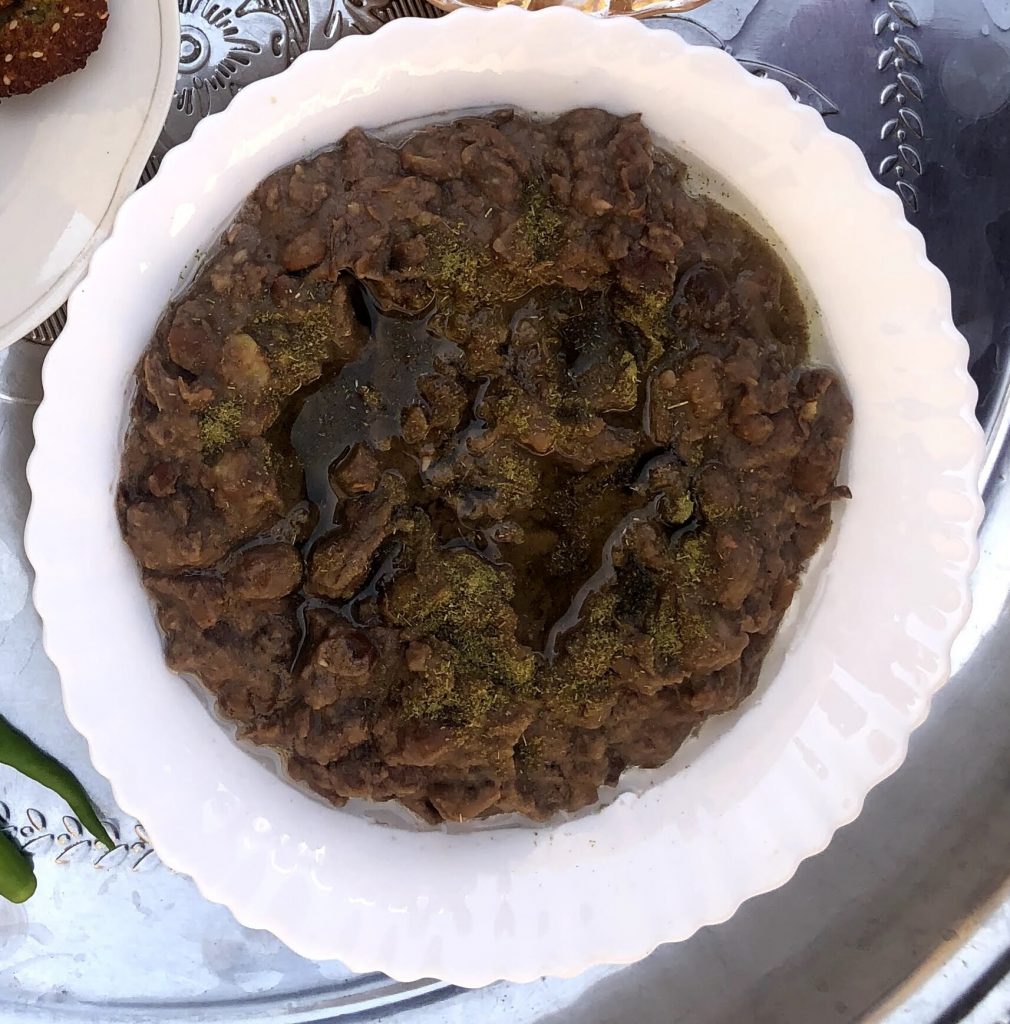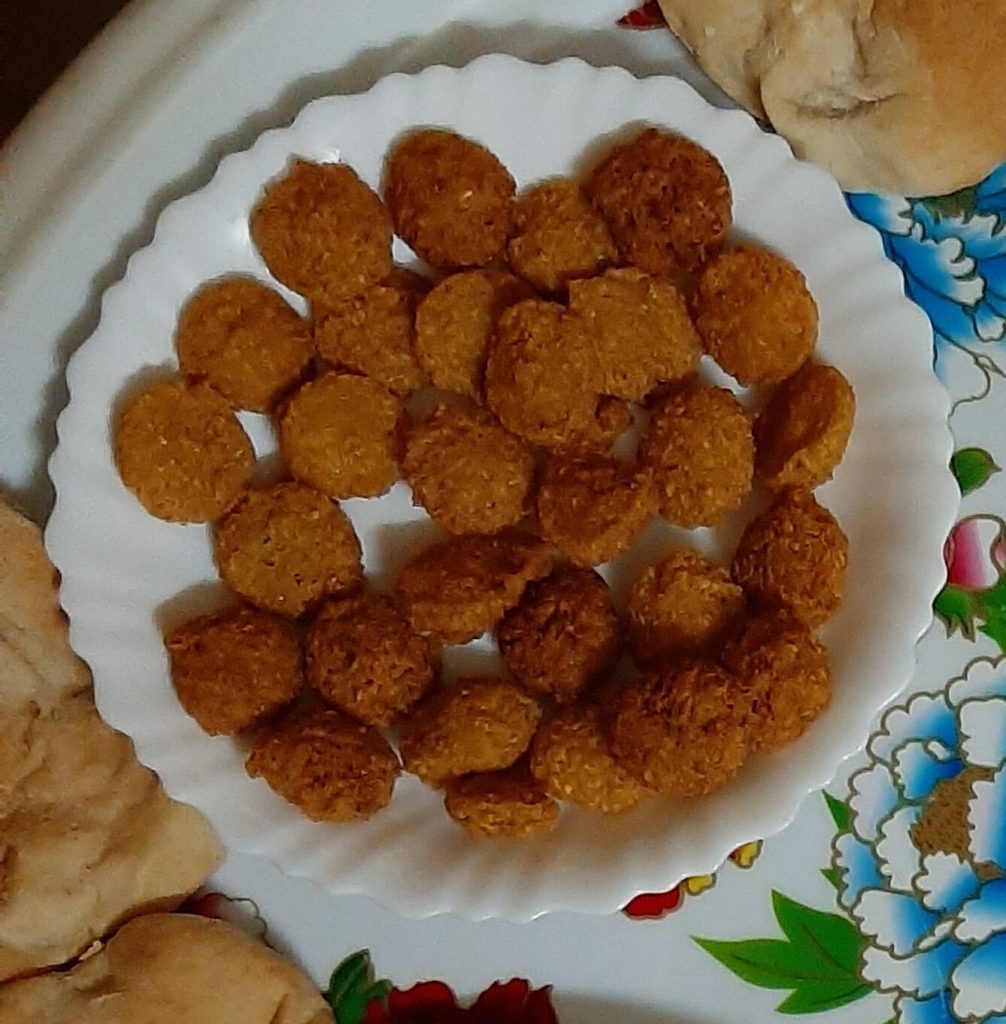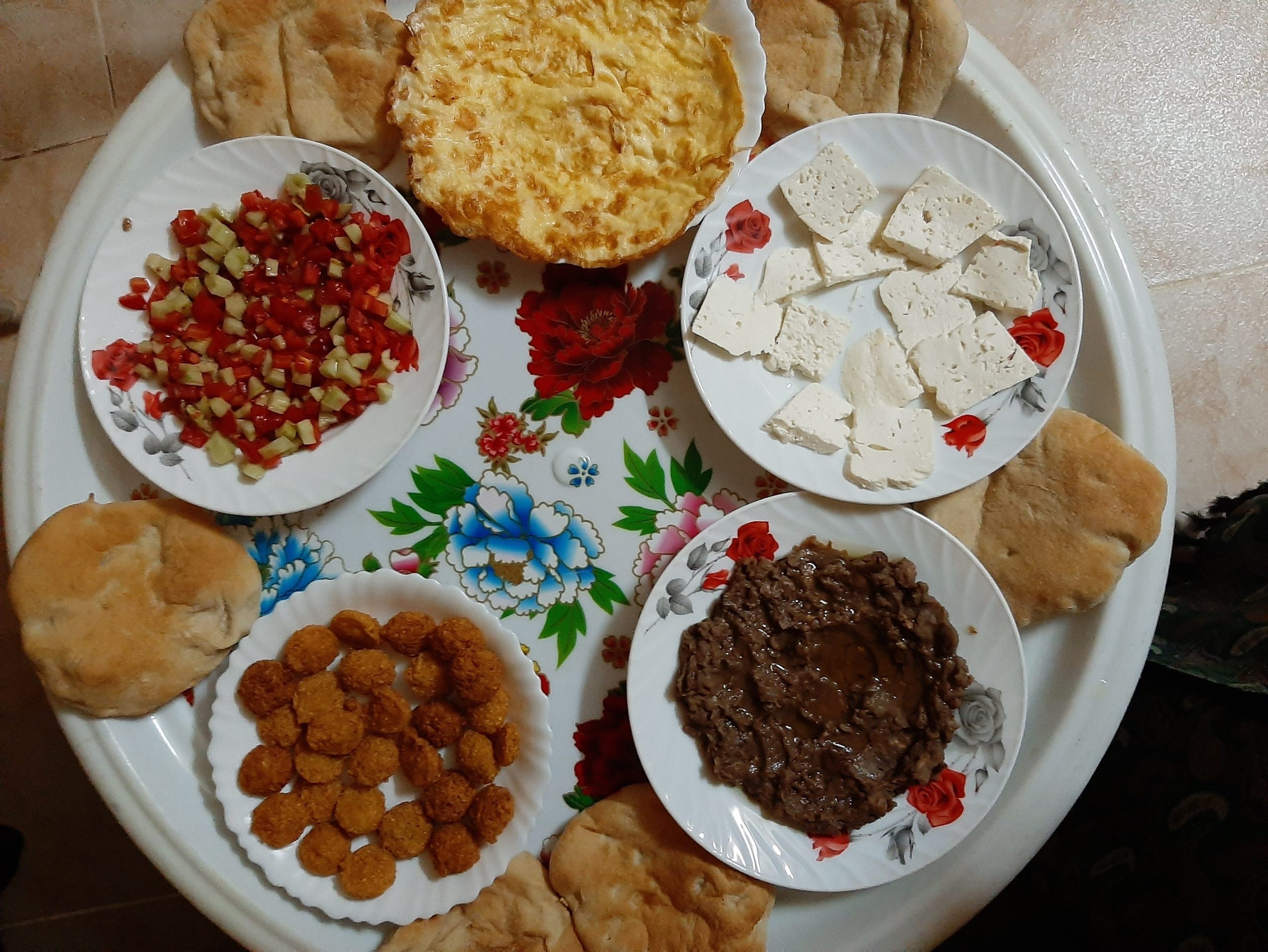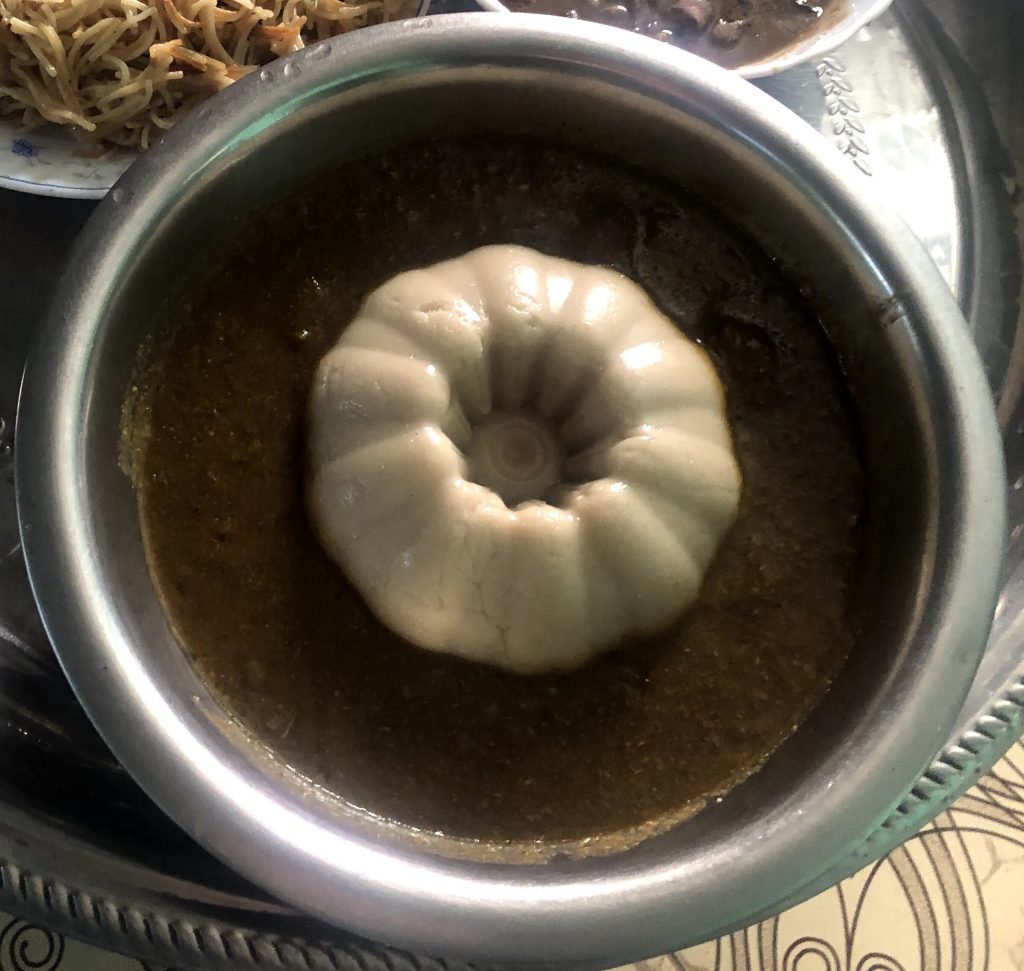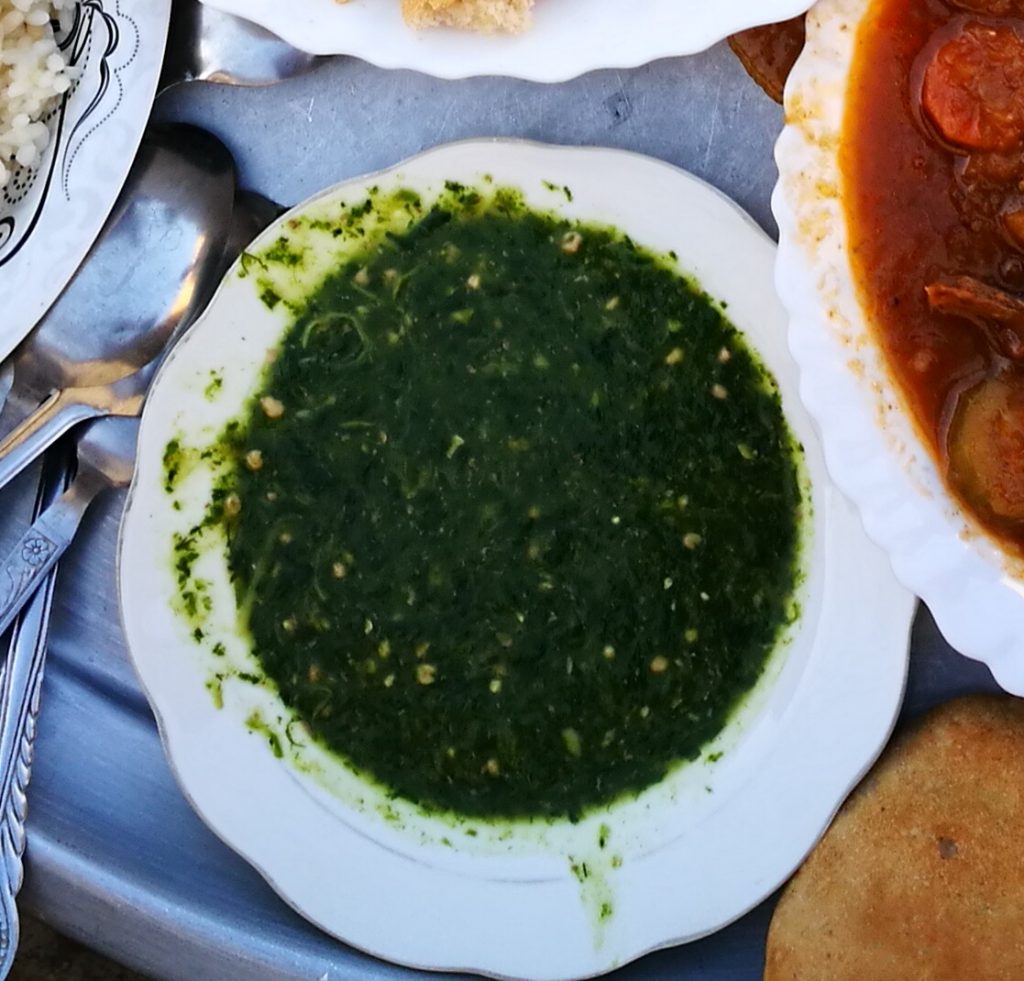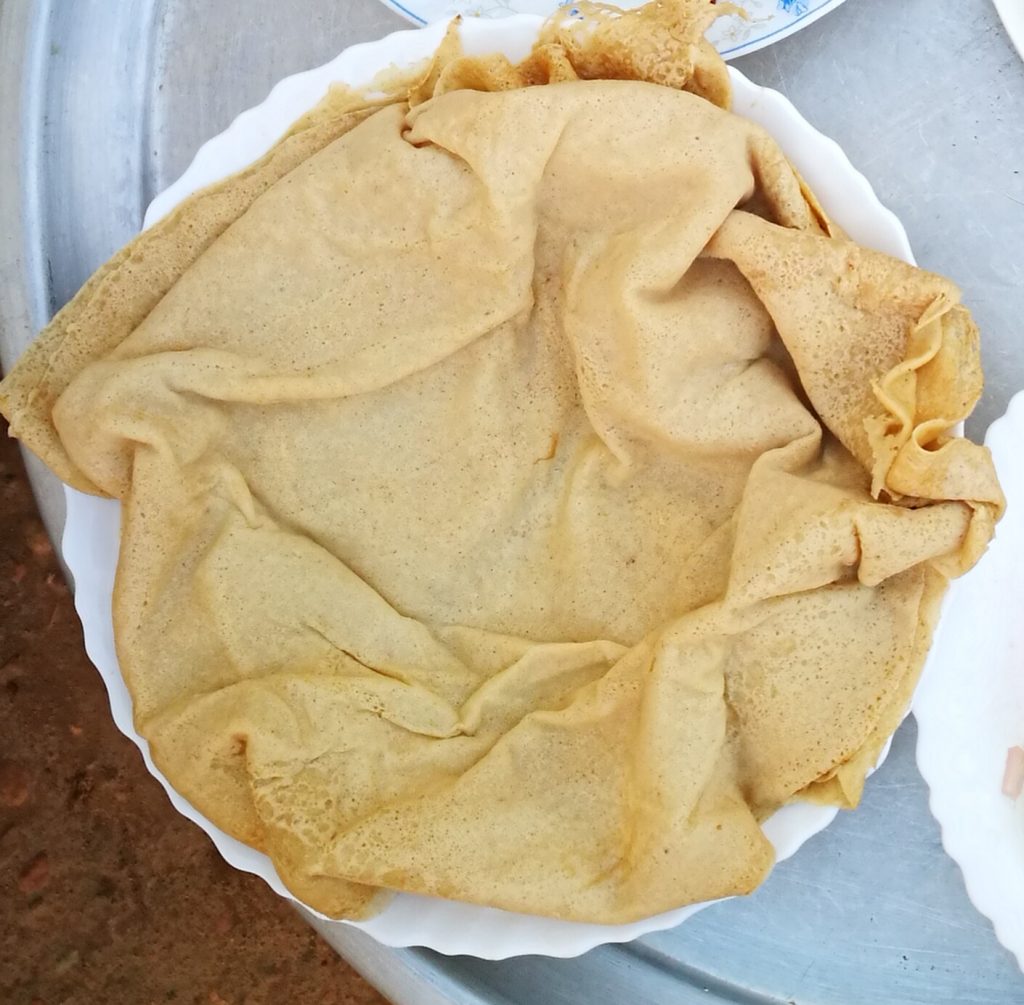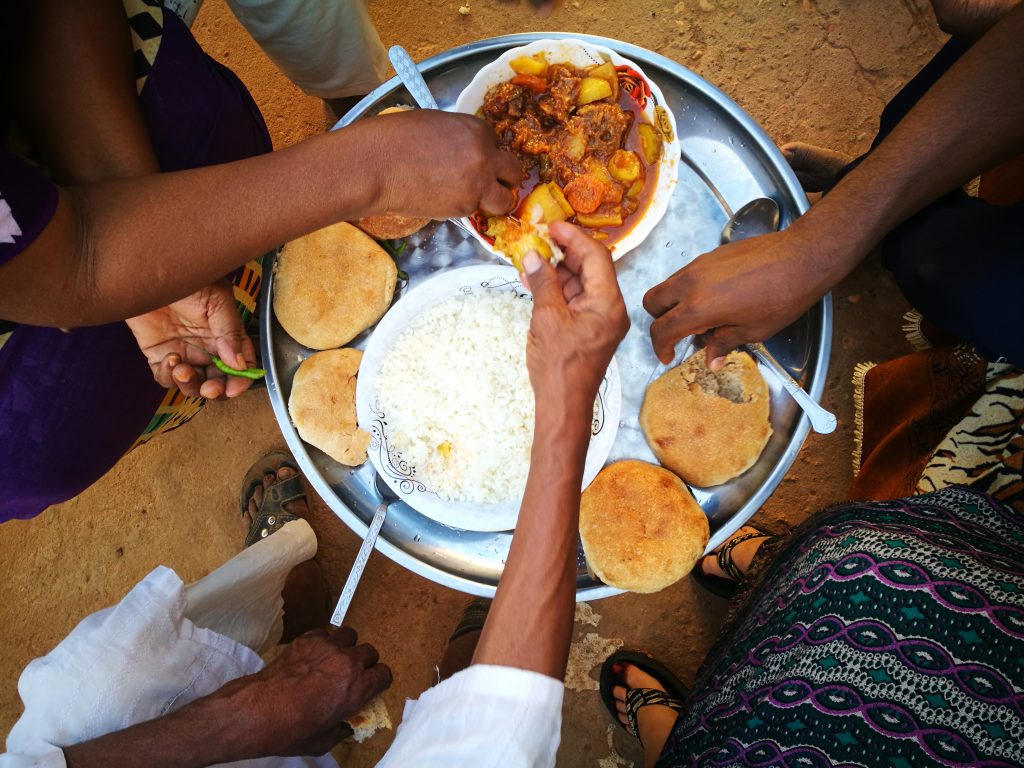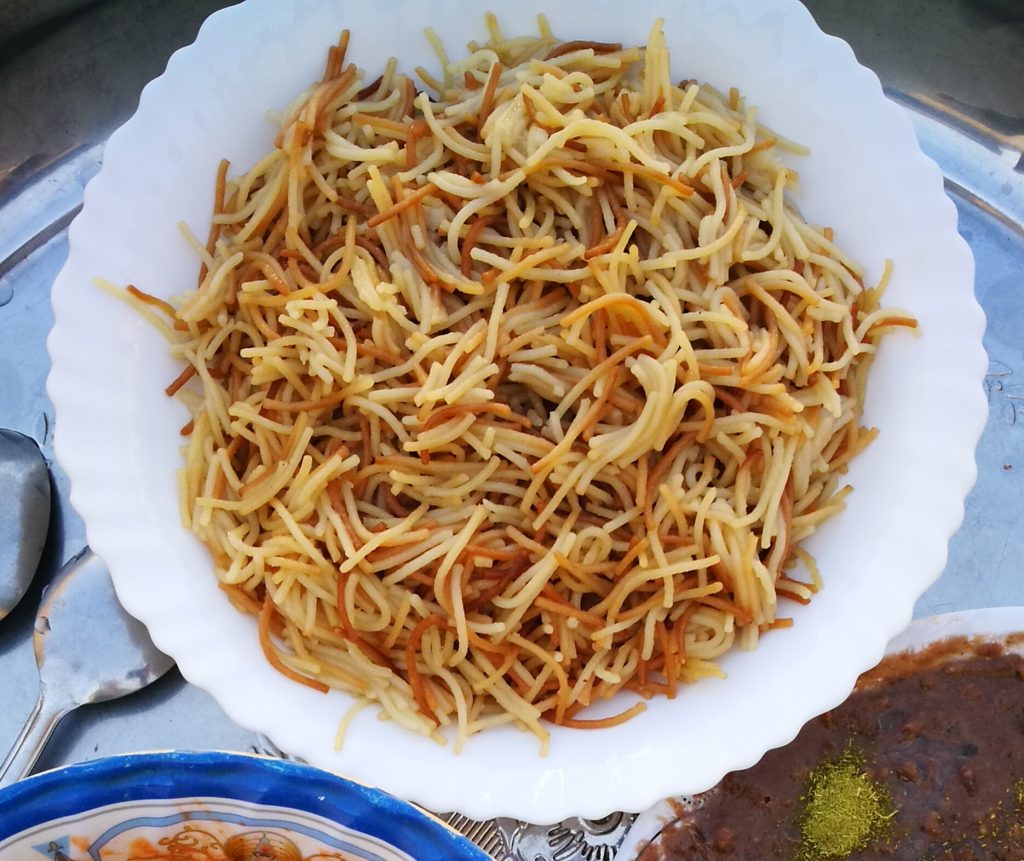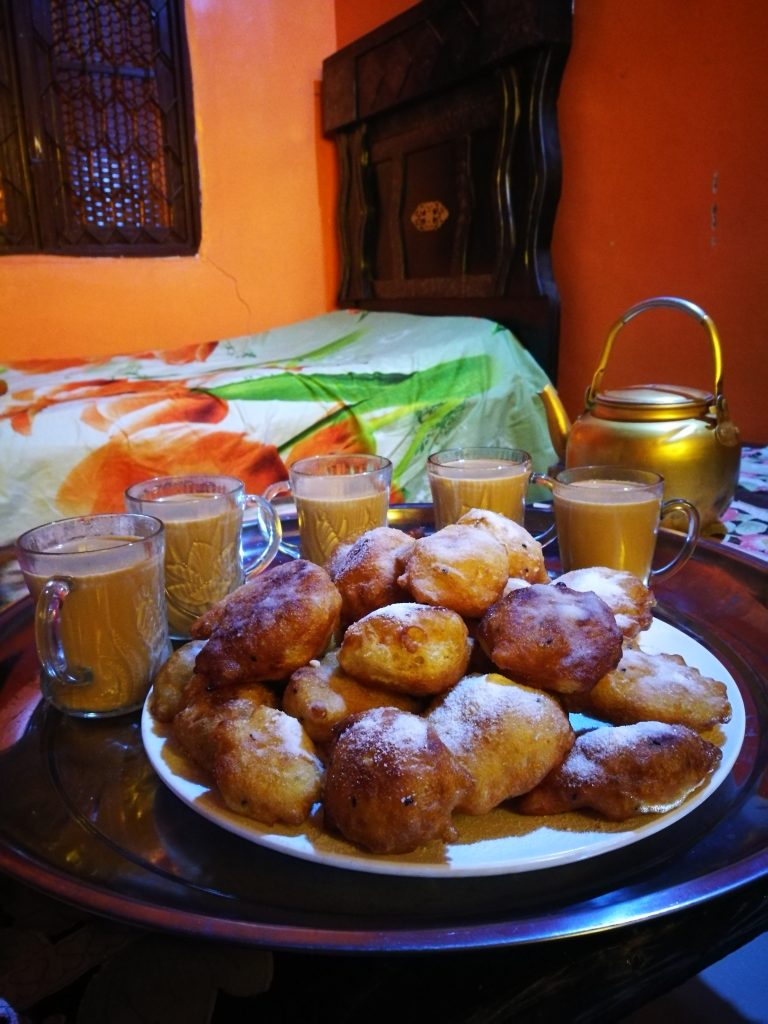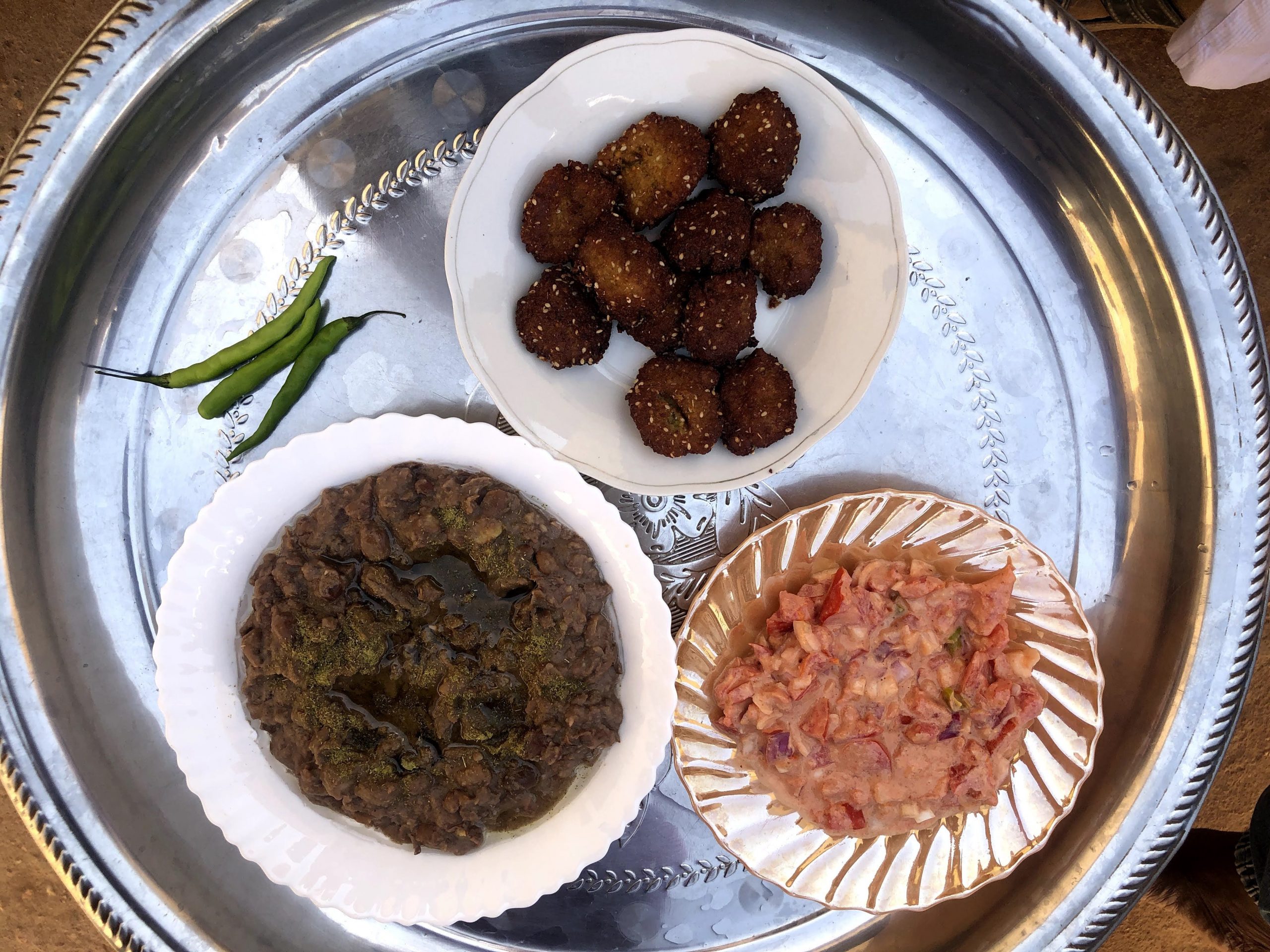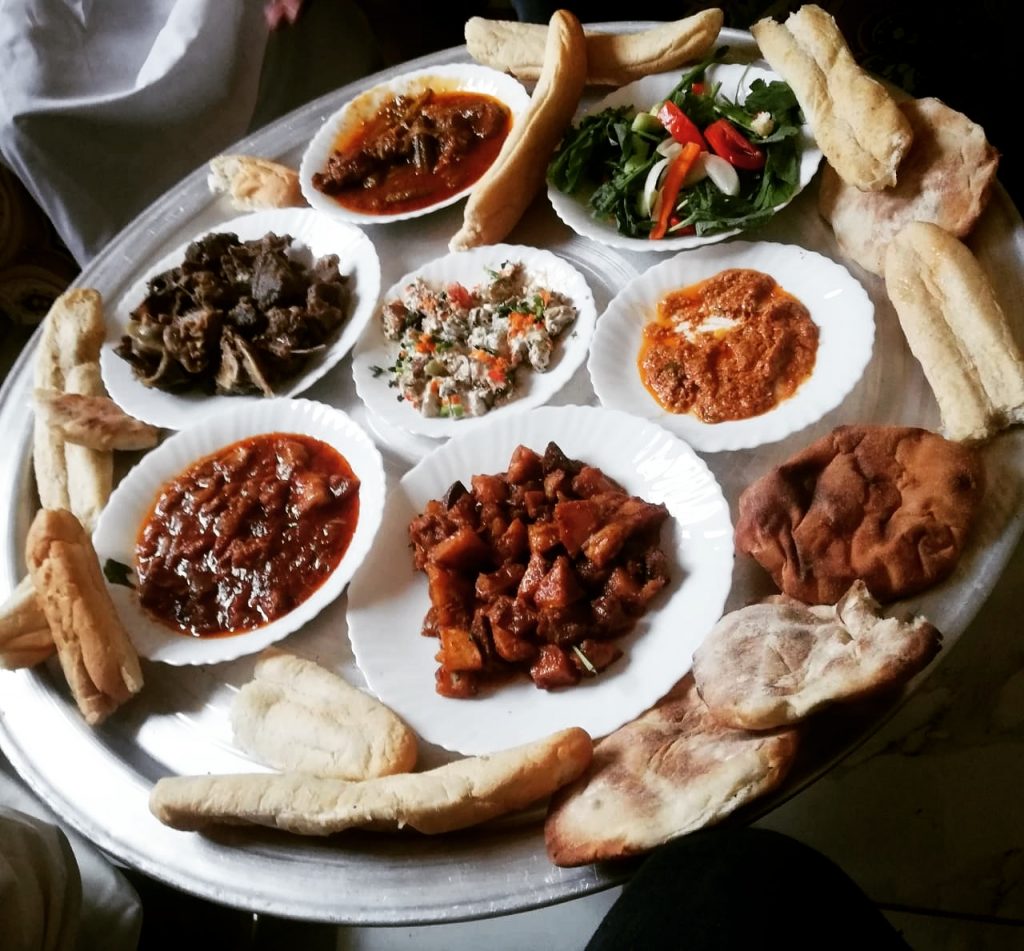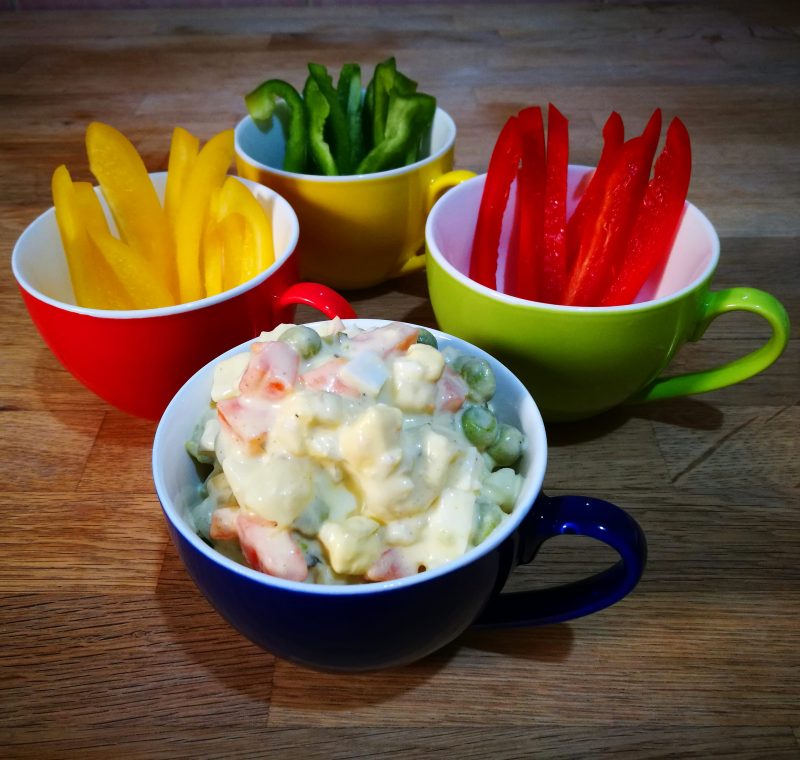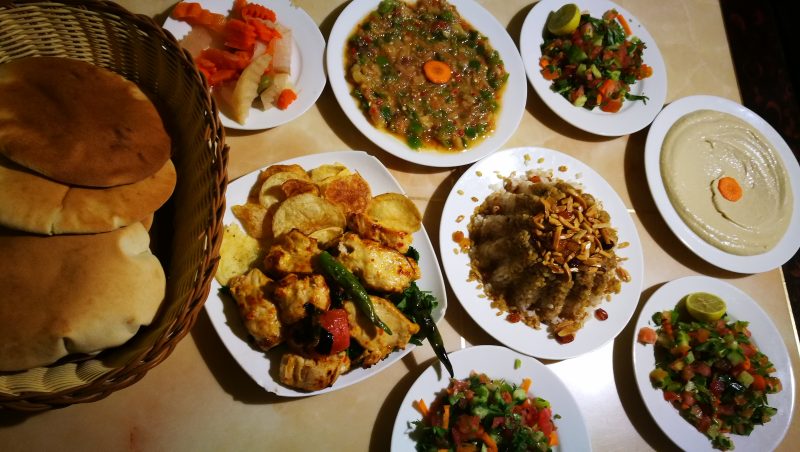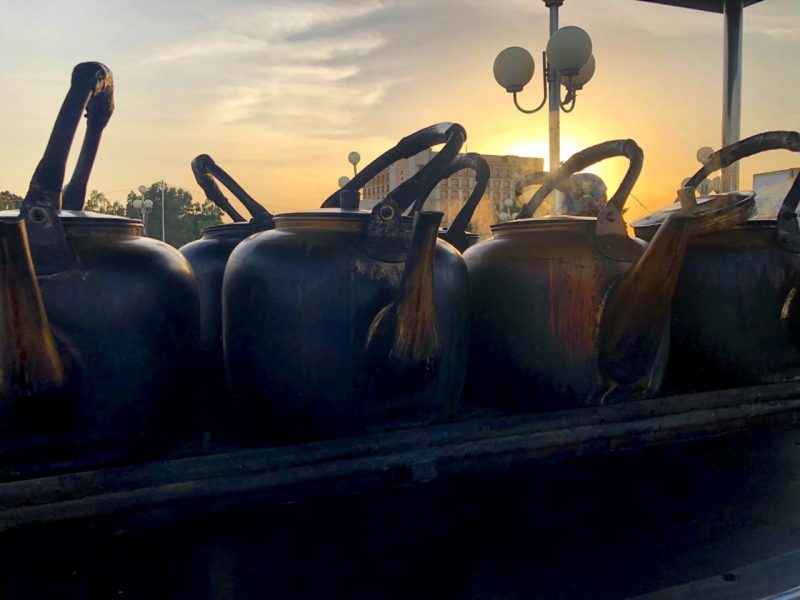Nothing makes you clean your apartment faster and more efficiently than visits.
“We should have people over more often,” we agree each time.
We managed to buy a few extra pairs of slippers for guests in time. At the last moment, we realized we don’t have any jugs for water. On to-do list until next time!
Last night we hosted our first iftar in Slovenia. Fatma from Turkey visited us with her two daughters. I really wanted to prove myself in the kitchen, because we were able to enjoy an impressive Turkish feast in their home at the beginning of Ramadan.
The menu was:
– dates to break the fast;
– salami and cheese spread;
– French salad (prepared the day before);
– Sudanese salad;
– fresh green salad;
– fried chicken fillets;
– tres leches cake (baked and soaked the day before).
These not so demanding dishes, once put together on a stage, received great praise. Compliments from Fatma the chef of Turkish cuisine can be counted among the highest recognitions of my skills as a hostess.
We are looking forward to more iftars like this in such pleasant company, hopefully next year already.


